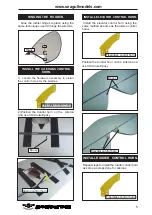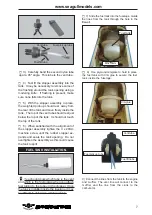
“Graphics and specifications may change without notice”.
MS:169
ASSEMBLY MANUAL
Specifications:
Wing span ------------------------------66.9in (170cm).
Wing area -----------------764.2sq.in (49.3sq dm).
Weight ------------------------10.6lbs (4.8kg).
Length ------------------------------58.7in (149.0cm).
Engine ------------------ 0.75-0.91cu.in ----2-stroke.
Engine ------------------ 0.91-1.10cu.in ----4-stroke.
Radio -------------------4 channels with 6 servos.
Electric conversion: optional
Flying skill level Advanced/Intermediate.
?


































